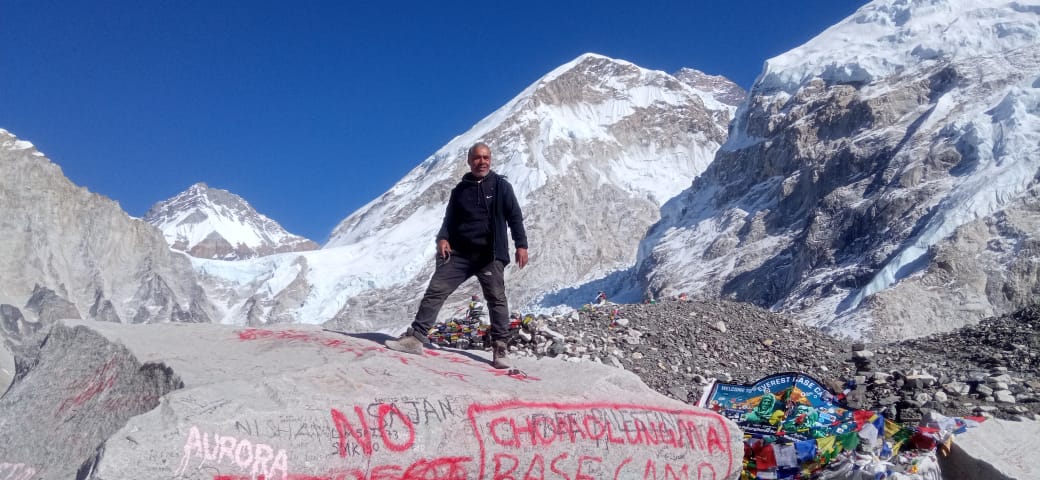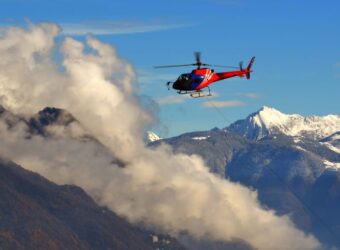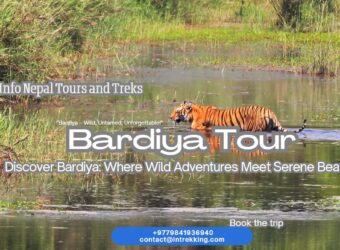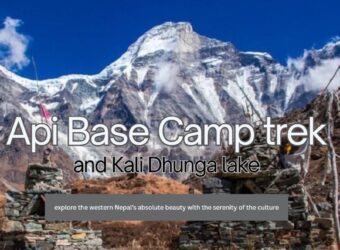Overview
Everest Base Camp Trek via Gokyo Lakes and Cho La Pass is one of the most adventurous and beautiful treks in the Everest region. It requires good fitness, acclimatization, and technical skills.
Throughout the journey, you will be blessed with the marvellous peaks of the Everest region. You can also see several of the highest mountains in the world, reaching the sky including Mt. Everest(8,848m), Kanchenjunga(8,586m), Lhotse(8516m), Makalu(8,481m), Nuptse(7,861m), and many more. The Everest Base Camp trek via Gokyo and Cho La pass starts with a short flight from Kathmandu to Lukla. From Lukla, our trek starts towards Namche which is one of the famous towns of the Everest region.
In Namche Bazaar, we’ll have our first acclimatization at a high altitude. Now our trail walks on the Everest Base Camp and summits the KalaPatthar through the famous Tengboche Monastery. From Kalapatthar enjoy the 360-degree snow-capped mountain view. You can perceive the marvellous view of Mt. Everest and its neighbouring mountains. Now you’ll cross the trek to Gokyo Valley crossing the path of Cho La.
You will visit all of Khumbu’s high valleys and explore Gokyo’s upper valley. Also observe the longest glacier in Nepal, Ngozumpa Glacier. Now we’ll head to Gokyo Lake and enjoy the views of stunning snow-covered peaks of the Khumbu region.
Everest Base Camp Trek via Gokyo Lakes and Cho La Pass Highlights
- Reach the foothills of the world’s tallest peak Mt. Everest.
Reaching the foothills of Mt.Everest is a remarkable feat of the trip that leads adventures through breathtaking landscapes. This area, known for its stunning natural beauty, provides a glimpse into the majestic Himalayas. The trek to the foothills often involves navigating through lush valleys and quaint villages, allowing travellers to experience the rich culture of local Sherpa communities. As one approaches Everest Base Camp, the scale and grandeur of the peak become increasingly awe-inspiring. Overall, this trip offers the perfect blend of adventure, culture, and the challenge of high-altitude trekking.
- Immerse in the panoramic views of the Mountain range
The Everest Basecamp Trek via Gokyo Lake and Cho La Pass is an exhilarating adventure that showcases the majestic peak of the Everest region. Starting with a flight from Kathmandu to Lukla, this trek Includes acclimatization in Namche Bazaar And culminates at Kala Patthar for stunning earning 360° views of Mount Everest and surrounding mountains. Trekkers Will traverse high valleys and cross Cho la Pass, Exploring the picturesque Gokyo Valley and Ngozumpa Glacier. The journey not only highlights breathtaking landscapes but also offers a unique opportunity to experience the rich culture and traditions of the Sherpa people. Overall, this trip combines adventure, stunning scenery, and cultural emerging in the Heart of the Himalayas.
- Experience the culture and traditions of the Sherpa people.
In addition to their cultural richness, the Sherpas are recognized for their distinctive stone houses and beautiful monasteries. Experiencing Sherpa culture offers insight into their culinary traditions, which utilize fresh local ingredients, and their deep connection to the natural landscape. Engaging with the Sherpa way of life is a unique opportunity to appreciate their resilience and harmony with one of the world’s most challenging environments.
The Sherpa people primarily residing in the mountainous region of Nepal, Are known for their incredible mountaineering skills and rich cultural heritage. Their tradition compasses Vibrant festivals, intricate rituals and a strong sense of community showcasing their renowned hospitality towards visitors. Buddhism plays a central role in their lives, influencing their daily practices and celebrations.
- 360-degree snow-capped mountain view from Kala-patthar
Kala-Patthar is a famous viewpoint in the Everest Region of Nepal, offering breathtaking 360-degree panoramic views of snow-capped mountains. Dominated by the majestic Mount Everest, the view includes a stunning array of other Himalayan mountains glistening in the sunlight.
At an elevation of 5545 meters (18,192 feet), Visitors can enjoy crisp mountain air and captivating valley and glacier landscapes. Trekkers often visit Kala-Patthar as part of their journey to Everest Basecamp, making it a memorable highlight. The tranquillity and awe-inspiring views create a deep connection to the beauty of nature in the Himalayas.
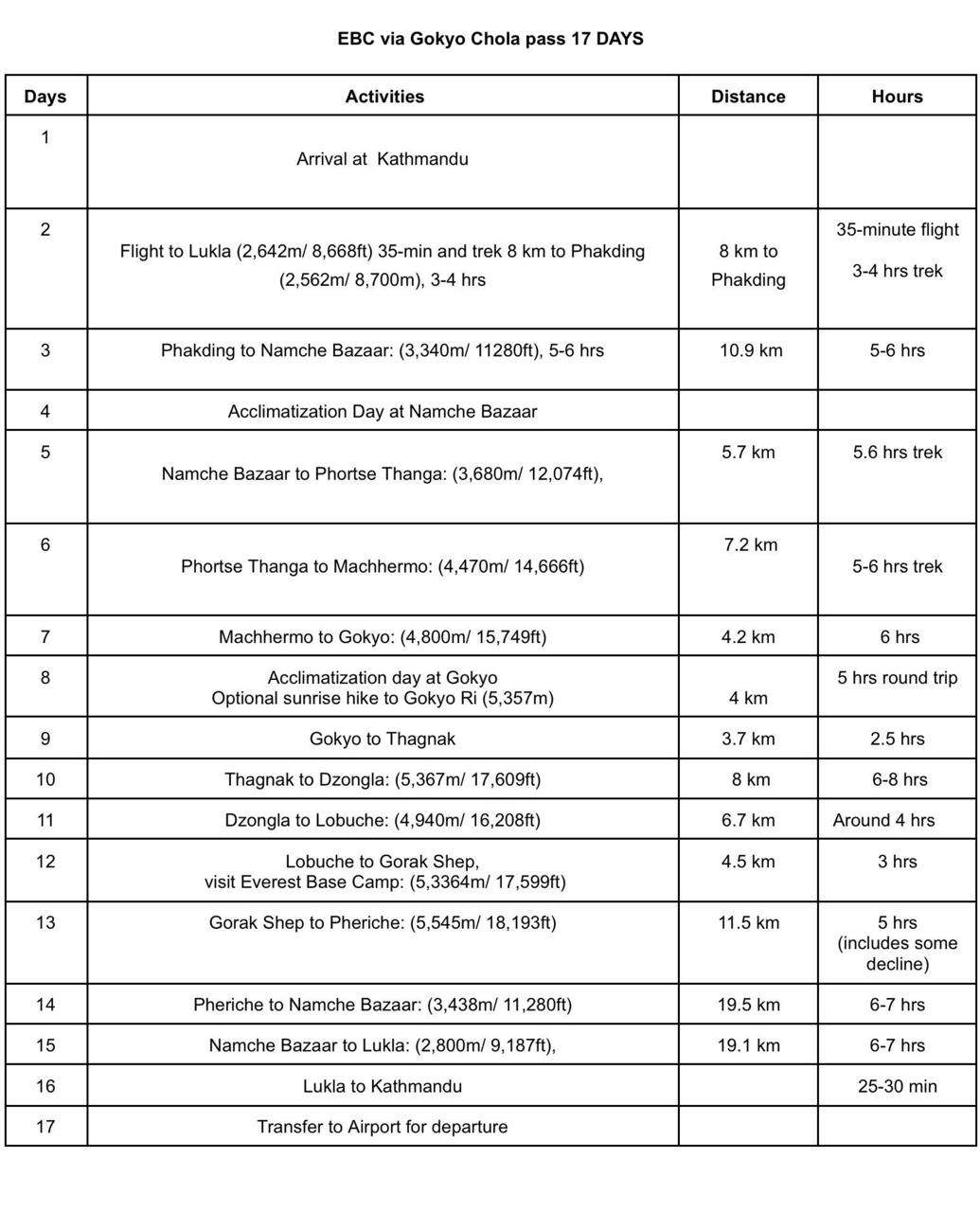
Everest Base Camp Trek via Gokyo Lakes & Cho La Pass-brief itinerary
Itinerary
Arrival at Kathmandu
-
- Destination
- Kathmandu
-
- Altitude
- 1,400m
Flight to Lukla (2,642m/ 8,668ft) 35-min and trek 8 km to Phakding (2,562m/ 8,700m), 3-4 hrs
We begin the day with an early morning scenic flight to Lukla, the gateway to the Everest Region. The short 35-minute flight offers stunning views of Himalayan peaks. After landing at Lukla (2642 metres), We will meet our Porter team and begin trekking. The trail descends gradually through pine forests and Sherpa villages.
We follow the Dudh Koshi River to reach Phakding. The Walking is gentle and serves as a good warm-up for the days ahead. Besides the gentle walk, you will get to enjoy the natural gifts of Nepal like River views, hanging bridges and a glimpse of local lives Which in itself gives you the vibe as if you have travelled back in time.
-
- Destination
- Phakding
-
- Altitude
- (2,642m/ 8,668ft)
Phakding to Namche Bazaar: (3,340m/ 11280ft), 5-6 hrs
The trip of today begins after breakfast as we follow the trail. North along the edge of Dudh Koshi River. We will cross several suspension bridges, including the iconic Hillary Bridge. The path winds through pine woodlands and small Hamlets.
Upon entering the Sagarmatha National Park. We will begin a steep ascent, the final climb to Namche is challenging but very rewarding, with the first views of Everest on clear days. Namche Bazaar is one of the most renowned places on earth, also known as the Sherpa capital is Full of hustle and bustles and is lively and well-equipped with shops and cafes and a vibrant atmosphere.
-
- Destination
- Namche Bazaar
-
- Altitude
- (2,642m/ 8,668ft)
Acclimatization day at Namche Bazaar
Acclimatisation is essential and Namche is a perfect place to rest and explore. We take a short hike to Everest View Hotel or Sherpa Museum for panoramic views of the Everest, Lhotse and Ama Dablam.
These side hikes help the body to adjust to higher altitudes. Back in Namche, you can explore bakeries, gear shops and local markets. The rest day greatly improves your chances of completing the trek successfully as your body will adapt to the surroundings and also further up the elevation as you will cover some elevations maximum possible before returning to the Namche Bazaar.
-
- Destination
- Namche Bazaar
-
- Altitude
- (2,642m/ 8,668ft)
Namche Bazaar to Phortse Thanga: (3,680m/ 12,074ft), 5-6 hrs
Trading the vibrant energy of Namache Bazaar for a more tranquil path, we set our sights on Phortse Thanga. The route unveils splendid vistas of towering peaks, winding gracefully through vibrant rhododendron forests and serene yak pastures.
A welcome contrast to the bustling Everest Base Camp trail, This path offers a sense of peaceful solitude and takes us down to the flowing river before a gentle ascent leads us to the charming settlements of Phortse Thanga. The shifting landscapes in the absence of large crowds combined to create a truly beautiful peaceful and immersive experience In the heart of the Himalayas.
-
- Destination
- Phortse Thanga
-
- Altitude
- (3,680m/ 12,074ft)
Phortse Thanga to Machhermo: (4,470m/ 14,666ft), 4-5 hrs
All ascent today takes us through the fragrant Alpine forest And welcoming Sherpa villages of of Julianne. Dole and Luza, each step bringing a gradual gaining elevation. As you approach Machhermo, The magnificent presence of Cho Oyu Comes into a clearer view a stunning backdrop to the region famed for its reported Yeti sighting. The landscape transition stores a more open and wind-swept environment as you climb higher reminder of the altitude. With the aim of proper accommodation will settle in for the early rest in Machhermo.
As we settle in Machhermo, the anticipation of tomorrow’s ascent fills the air. The sunset casts a golden hue over the valley, highlighting the peaks that surrounds us. Our path takes us closer to the stunning Gokyo Lakes, known for their vibrant turquoise waters. The crisp mountain air invigorates our spirits, and as we share stories with fellow trekkers the bond together grows stronger with the adventure. The starry sky above us serves as a beautiful reminder of the vastness of this trip. Rest is essential, for tomorrow promises breathtaking views of unforgettable experiences ahead.
-
- Destination
- Machhermo
-
- Altitude
- (4,470m/ 14,666ft)
Machhermo to Gokyo: (4,800m/ 15,749ft)
-
- Destination
- Gokyo
-
- Altitude
- (4,800m/ 15,749ft)
Acclimatization day at Gokyo
On our second acclimatization during the trip, we embark on a scenic hike to Gokyo Ri, where we’ll be treated to breathtaking views of some of the tallest peaks on the planet. Later, we’ll spend the night in Gokyo, allowing us to acclimatize further to the altitude.
To aid our bodies in adjusting, we have designated rest days in Gokyo. Many of us will rise early for a stunning sunrise hike to Gokyo Ri (5,357m), which offers astonishing panoramas of Everest, Cho Oyu, Lhotse, and Makalu- truly one of the finest viewpoints in the entire Himalayas. For those who prefer a more leisurely day, exploring the nearby glacier or unwinding by tranquil lakes are wonderful options. This crucial day will help ensure we are fully prepared for the challenging high-pass crossing ahead.
-
- Destination
- Gokyo
-
- Altitude
- (4,800m/ 15,749ft)
Gokyo to Thagnak
-
- Destination
- Thagnak
-
- Altitude
- (4,750m/ 15,585ft)
Thagnak to Dzongla: (5,367m/ 17,609ft)
Today is a significant unfulfilling day as we set out early to conquer the Cho La Pass, Which stands at an elevation of 5,367 metres. This stretch of trek is both visually stunning and physically demanding. The trail features particularly steep an I C-section that requires extra caution.Upon reaching the summit, we are welcomed by vibrant prayer flags and breathtaking panoramic views of the surrounding mountains and glaciers.
The descent towards Dzongla Is equally steep yet picturesque. This day emphasises the necessity for stamina and concentration due to high altitudes. It is one of the most challenging segments of our trip, and we must tread carefully because the path is vertical, And the roads are slick with the eyes, which can pose difficulties. After navigating some crevasses, We will finally arrive in Dzongla village, Where we will stay overnight.
-
- Destination
- Dzongla
-
- Altitude
- 5,367m / 17,609ft
Dzongla to Lobuche: (4,940m/ 16,208ft)
Start your unforgettable journey after a light breakfast at Dzongla, where we will set off on a scenic short trek that promises an incredible experience. Our path meanders through a lush grassy trail and expansive riverbed, leading us to the charming village of the Lobuche.
This day’s trek is designed to be more relaxed, perfect for soaking in the stunning vistas of the Himalayas. The well-defined path contours along the hillside, offer views of the iconic Ama Dablam. As we make our gradual descent and connect with the renowned Everest Base Camp trail, you’ll have the chance to immerse yourself in the stark yet beautiful landscapes that surround us.
By early afternoon, we’ll arrive in Lobuche, poised for the imminent adventure that lies ahead: the final push towards Everest Base Camp. This trek is not just about reaching your destination, but connecting with nature and experiencing the majestic beauty of the Himalayas. Join us on this incredible trek to Everest Base camp for an experience of a lifetime, where every step brings you closer to the world’s highest peak.
-
- Destination
- Lobuche
-
- Altitude
- (4,940m/ 16,208ft)
Lobuche to Gorak Shep, visit Everest Base Camp: (5,3364m/ 17,599ft)
One of the most anticipated days of our trekking adventure in the Himalayas is to hike to Gorakshep. Which serves as our last overnight stop at high altitudes before reaching the Everest Base camp, after checking in at Gorakshep, We embark on an exhilarating journey towards Everest Base Camp. The trail, which follows the stunning Khumbu glaciers is rocky and challenging, making it an essential part of the Everest trekking experience.
Everest Base Camp is truly an emotional and unpredictable moment offering breathtaking views of majestic snow-capped peaks that surround us. This pivotal day in our trekking allows us to soak in the beauty of the world’s highest mountain, bringing us face to face-with the grandeur of nature.
After experiencing the awe of EBC, We make our way back to Gorakshep for some well-deserved rest. This day is not just significant for reaching Everest Base Camp but also for enjoying the spectacular scenery and camaraderie that comes with drinking in the Himalayas. Join us on this incredible journey to explore the wonders of Everest where each step brings closer to the adventure and nature’s incredible beauty.
-
- Destination
- Everest Base Camp
-
- Altitude
- (5,3364m/ 17,599ft)
Gorak Shep to Pheriche: (5,545m/ 18,193ft), 7-8 hrs
After enjoying a hearty early morning breakfast our adventure begins as we trek towards Pheriche, Notule, a notable stop on our Everest region journey. During our hike, we will visit Kalapatthar, Renowned for its breathtaking 360° views of the snow-capped Himalayan peaks. After soaking in this stunning vista we will return to Pheriche for an overnight stay.
In the predawn hours, we will ascend Kala Patthar (5,545m), Celebrated as the premier viewpoint for experiencing the majesty of Mount Everest. The early morning climb, despite the Chili’s Royal worth it, offering unparalleled scenic rewards. Following our descent to Gorakshep for a refreshing breakfast, we will continue our return trek to Pheriche. Although it will be a lengthy day of hiking, the central lower altitude will help you feel invigorated. Pheriche itself is a charming windswept Village that features a medical centre and cozy teahouse, making it the perfect spot to relax and rejuvenate after our trek.
This trek not only showcases the majestic beauty of the Himalayas but also provides an authentic experience of local culture and spirituality in the Everest Region.
-
- Destination
- Pheriche
-
- Altitude
- 5,545m / 18,193ft (Kala Patthar)
Pheriche to Namche Bazaar: (3,438m/ 11,280ft)
Today marks an exciting descent to Namche Bazaar, a vibrant village nestled in the heart of the Himalayas. Our journey begins by following the breathtaking Dudh-Koshi George, surrounded by lush pine forests that enhance the beauty of this expedition. Namche Bazaar, often referred to as the gateway of Everest, it’s not just our destination world cultural marvel where tradition meets modernity.
As we embark on our return journey we’ll traverse familiar paths passing through the picturesque landscapes of the Pangboche and Tengboche monasteries. Richard Step offers stunning views and students must make the trek both exhilarating and reflective. Although the trail is primarily downhill, it includes several uphill segments that will test our stamina and energise our spirits.
Upon reaching Namche Bazaar travellers will find the warm and bustling ambience of this commercial hub. The contrast between Namche and the serene Highlands is palpable, offering visitors a chance to Indulge local cuisines enjoy refreshing showers and perhaps explore the vibrant shops selling traditional craft and trekking gear.
This enriching experience in nature is perfect for trekkers seeking Adventure and cultural immersion, whether you are a seasoned, hiker or novice, The journey through the Dudh-Koshi gorge and its vibrant market signature provides unforgettable memories and stunning views. Plan your trip today to discover the magic of Namche Bazaar and the allure of the Himalayas.
-
- Destination
- Namche Bazaar
-
- Altitude
- (3,438m/ 11,280ft)
Namche Bazaar to Lukla: (2,800m/ 9,187ft), 5-6 hrs
As we embark on the final segment of our trekking adventure, The trail leads down, requiring deliberating, cautious steps to navigate the scenic paths. Our journey takes us across breathtaking dome suspension bridges that span the rushing Dush Koshi River, offering stunning views of the thrill of crossing such remarkable structures. The picturesque route gives us a chance to appreciate the natural beauty surroundings as we approach our destination: Lukla
Overnight in Lukla, We find ourselves enveloped in the vibrant atmosphere of this bustling mountain town, a gateway to the Everest region. This charming village is not just a stopover; It’s a place where trekkers from all corners of the world come together to share their experiences and celebrate the rigorous journey they have undertaken.
On our final day of the travel. We retrace our steps along the trails that have become familiar. Walking back down to the banks of the Dudh Koshi River, We passed through charming villages such as Monjo and Phakding, each filled with welcoming locals and rich cultural experiences. Although the trail is primarily descent it still offers some unexpected climbs, reminding us that the journey of trekking is rarely straightforward.
Reaching the Lukla marks the conclusion of this incredible trek, A moment filled with a sense of achievement and camaraderie with our fellow trekkers. There’s also time to reflect on the challenges we have overcome and the stunning landscapes we have traversed During our expedition. This trek not only tests our physical limits but also strengthens our spirit, making our every step worthwhile.
In summary, our adventure concludes in the vibrant town of Lukla where celebration, reflection and a newfound connection await. Whether it’s the thrill of crossing Suspension bridges, the joy of interacting with local villagers, or breathtaking views of the Dudh Koshi River, this journey is an unforgettable highlight in the world of trekking in the Himalayas.
-
- Destination
- Lukla
-
- Altitude
- 2,800m / 9,187 ft
Lukla to Kathmandu
Today marks our early morning flight back to Kathmandu, the gateway to the majestic Himalayas. Weather permitting. We will take a scenic morning flight from Lukla to Kathmandu. The breathtaking aerial views of the Himalayas promise to leave a lasting impression on your adventure filled journey.
Upon landing in Kathmandu, our team will transfer you to your hotel, ensuring a smooth arrival experience. Once settled, you have ample leisure time to immerse yourself in the vibrant markets of Kathmandu. Explore the rich culture, shop for unique souvenirs, or treat yourself to a rejuvenating massage.
Whether you wish to relax or your hotel or venture out to discover bustling streets, Kathmandu offers an array of experiences that cater to every traveller’s taste. Enjoy your day at your own pace, creating memorable moments in this extraordinary city.
-
- Destination
- Kathmandu
-
- Altitude
- 1,400m/4,593 ft
Transfer to Airport for your onward destination
A designated representative will greet you at your hotel and transport you to Tribhuvan International Airport. Enjoy a seamless airport transfer experience as you head home! Our professional drivers are dedicated to providing you with a comfortable and hassle-free ride, allowing you to relax before your journey. With real-time traffic updates on the best routes in mind, You can be sure to arrive at the airport on time.
Route Map
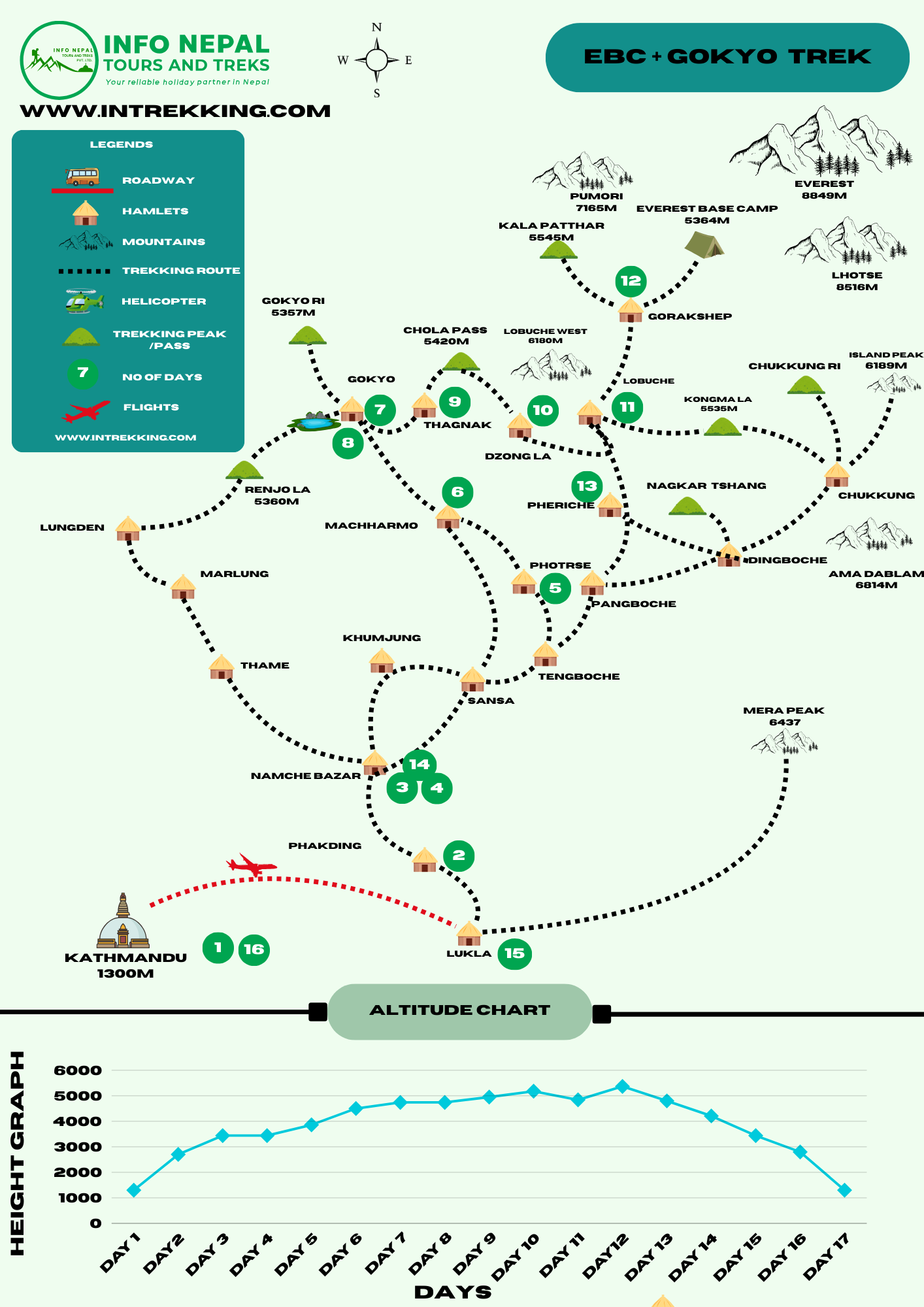
EBC = Gokyo trek map – Complete route, altitude and itinerary guide.
Explore one of the most scenic and adventurous trekking routes in the park with this detailed Everest base camp (EBC) and Gokyo Lake trek map. Designed by Infinite Pool Tools and Tricks, this map provides A comprehensive overview of the 17-day Everest Base Camp and Gokyo Ri trek, Covering every major stop, altitude gain and natural attraction.
Key highlights of EBC + Gokyo Trekking Route
- Starting point: Kathmandu: 1400 m
- Flight to Lukla: The journey begins with a thrilling flight to Lukla Airport, the gateway to the Khumbu region.
- Popular Hamlets and Overnight Stops:
- Phakding (day 2)
- Namche Bazaar (Day 3-4): The acclimatisation hub of Khumbu region.
-
- Phortse, Machharmo, Gokyo ( days 5-8): Follow the scenic route through Sherpa villages and glacial valleys.
- Gokyo Ri (5,357 m): By standing viewpoint for panoramic views of Mount Everest, Lhotse, and Cho Oyu.
- Cho La Pass (5,420 m): A high-altitude challenge connecting Gokyo and EBC trails.
Lobuche, Gorakshep, Everest Base Camp ( Days 10-12): Reach Everest Base Camp.
Includes/Excludes
What's included?
- Airport picks up and drops off by the private vehicle.
- Three-time Meal During trekking(Breakfast-Lunch-Dinner)
- All ground transportation on a comfortable private vehicle as per the itinerary
- Flight From Kathmandu to Lukla And Lukla to Kathmandu
- Guided city tour in Kathmandu by private vehicle
- An experienced, English-speaking and government-licensed trek leader and assistant trek leader (10 trekkers: 1 assistant guide) Porter service (2 trekkers: 1 porter)
- Staff costs including their salary, insurance, equipment, food and accommodation Down jacket and sleeping bag (to be returned after trip completion)
- All necessary paperwork and trekking permits and TIMS.
- Medical kit (carried by your trek leader)
- All government and local taxes
- Trekking map
- Trekking certificate after trek.
What’s excluded?
- Nepalese visa fee
- Excess baggage charge(s)
- Private transportation except what is mentioned in the What Is Included section
- Extra night accommodation in Kathmandu and Pokhara because of early arrival, late departure, early return from mountain (due to any reason like natural disaster and your own problems) than the scheduled itinerary Lunch and evening meals in Kathmandu (and also in the case of early return from the mountain than the scheduled itinerary) International flights
- Travel and rescue insurance
- Trekking equipment
- Personal expenses (phone calls, laundry, bar bills, battery recharge, extra porters, bottle or boiled water, shower, etc.) Tips for guide(s), porter(s) and driver(s)
Useful Info
Accommodation
- Teahouse/lodges during the trek
- Hotel in Kathmandu
Meals
- Breakfast, Lunch, Dinner during the trek
- Breakfast in Kathmandu
Permit required for Everest Basecamp trek via Gokyo Cho la pass
- Sagarmatha National Entry Park Permit
- Khumbu Pasang Lhamu Rural Municipality Permit
- TIMS card. LINK: CLICK HERE (sometimes optional for EBC)
Altitude sickness during Everest Basecamp trek via Gokyo Cho la pass
Altitude sickness, also known as acute mountain sickness (AMS), occurs when you ascend to high altitudes too quickly and your body struggles due to a lack of adequate oxygen. It typically affects people after ascending beyond 2500 metres (8,200 ft) and can escalate if ignored.
Common signs and symptoms.
Symptoms usually begin 6-24 hours after ascent and can range from mild to life-threatening. It’s crucial to recognise early signs:
Mild Symptoms
- Headache (Most common)
- Nausea or Vomiting.
- Loss of appetite.
- Dizziness or Lightheadedness
- Fatigue or unusual tiredness
- Difficulty sleeping.
Moderate to severe symptoms:
- Persistent, worsening headache.
- Confusion or disorientation
- Shortness of breath, even at rest.
- Difficulty walking (ataxia)
- Tightness in the chest.
- Severe fatigue.
- Bluish lips or fingernails.
Serious Symptoms:
- High-altitude cerebral edema.
- Swelling of the brain.
- Symptoms include Confusion, hallucinations, poor coordination, Drowsiness or even coma.
- Life-threatening and requires immediate descent.
High altitude pulmonary oedema.
- Fluid builds up in the lungs.
- Symptoms include breathlessness at rest, coughing (Possibly with pink froth), Tight chest, and blue lips.
- Fatal if untreated.
Preventive measures.
- Ascend gradually.
- Stay hydrated and avoid beverages like alcohol and caffeine, especially in the early days of the trek.
- Consumers consume a high-calorie diet with carbohydrates. And avoid overeating and spicy food. That could lead to stomach upset.
- Climb high, sleep low.
- Consider medication. Often recommended for the high elevation trekkers, Acetazolamide is often taken 1-2 days before reaching high altitudes.
- And most importantly, know when to stop or descend.
Best time to trek for Everest Basecamp trek via Gokyo Cho la pass
pre-monsoon (March to May) and post-monsoon (September to November)
The best time to trek EBC is during the two main trekking seasons:
Spring (March-May)
- Weather conditions: Spring is known for its warm temperatures and clear skies, providing optimal trekking conditions. The days are pleasantly warm, while the nights can be chilly, especially at higher elevations.
- Flora: This season is also marked by the blooming of rhododendrons and other wildflowers, adding vibrant colours to the landscape.
- Views: clear visibility allows for stunning panoramic views of the mountains, including Mount Everest, enhancing the overall trekking experience.
Autumn (September to November)
- Weather conditions: Autumn offers stable weather patterns with crisp air and clear skies. The temperatures begin to drop as winter approaches, but it remains comfortable for trekking.
- Visibility: This season is known for its exceptional visibility, allowing trekkers to fully appreciate the beauty of the breathtaking landscapes and mountain peaks.
- Cultural events: Many local festivals, including Dashain and Tihar, occur during this time, providing trekkers with a unique cultural experience and the opportunity to engage with the local community.
- Crowd: Like spring, Autumn is a popular time for trekking, so expect to see more fellow adventurers along the trail, fostering a sense of camaraderie.
A typical day at the destination during the Everest Basecamp trek via Gokyo Cho la pass
Morning Wake-up call (6:00 am-8:00 am): So the typical day at the destination starts followed by a wake-up at around 6:00 am. Your guide or porter will give you a knock on the door, and following that, you’ll be provided with a warm sip of light beverages.
- Freshen up & pack: You’ll freshen up (limited facilities- think basic sink & wet wipes) and pack your gear before breakfast.
- Breakfast (7:00 am-7:30 am): Served in a tea-house dining hall with options including porridge, Tibetan bread, egg toast, pancakes, or muesli with tea or coffee.
- Start trekking (8:00 am): You’ll hit the trail while the sun is still soft and warm and the views are crisp. Morning treks are quieter and more pleasant.
Mid-day (11:00 am – 1:00 pm)
- Trekking continues: you’ll walk for a few hours, with breaks along the way to hydrate, take photos or catch your breath- especially in higher elevations.
- Lunch stops (noon): You’ll walk for a few hours, with breaks along the way to hydrate, take photos or catch your breath- especially at higher elevations.
- Rest and recharge: You’ll rest for around 30 minutes to an hour, letting your body acclimate and adapt, and food settle before hitting the trail again.
Afternoon (1:00 pm-4:00 pm)
- Final stretch: After trekking resumes, it often involves more elevation gains. The pace slows down a bit, especially above 3,000 meters.
- Arrival at destination (3:00 pm-4:00 pm): You’ll reach the next teahouse village by late afternoon. Upon arrival, you check in, drop your pack, and order dinner in advance.
Evening (4:30 pm-9:00 pm)
- Unwind and explore: You can take short acclimatization walks, write a journal, chat with fellow trekkers, or explore the villages. Some places have bakeries or shops.
- Dinner (6:00 pm- 7:00 pm): Everyone gathers in the warm dining hall. Dal Bhat is the most common meal, along with comforting soups and carb-rich dishes.
- Trek briefing: Your guide may brief you on the next day’s route terrain, weather, and any altitude concerns.
- Early to bed (8:00 pm- 9:00 pm): With early mornings and physical exhaustion, trekkers usually go to bed early. Teahouses get chilly fast, so you’ll feel cosy in your sleeping bags.
Extras to Expect during Everest Basecamp trek via Gokyo Cho la pass
- No hot showers daily- Even if available, for a few days, for free.
- Charging costs extra: power banks are lifesavers.
- Wi-Fi is rare or costly_ best to unplug and enjoy the immersion into nature.
- Toilets vary- Western at lower elevations; squat-style or basic higher up.
Hiring a guide and porter during the Everest Basecamp trek via Gokyo Cho la pass
- Decide early: independent or through an Agency?
- Trekking agency (most reliable):
- Offers licensed, insured guides and porters.
- Handles all logistics: flights, permits, accommodations, etc.
- You pay more, but it’s stress-free and safer.
Independent guide/porter
- Slightly cheaper, but you’ll need to ensure they are licensed and experienced.
- You’ll need to coordinate everything yourself ( permits, itinerary, bookings)
Recommended: Use a government-registered trekking agency in Kathmandu or online ahead of time for verified and insured staff.
- Verifying Credentials and Experience
Guide:
- Must be government-licensed.
- Should have basic English and first aid knowledge.
- Experience in high-altitude trekking is a must.
Porter:
- Usually from the local sherpa or rai communities.
- Can carry 20-25 kg of loads.
- Often have limited English but are incredibly strong and helpful.
If you’re booking independently, ask for their trekking licence, insurance details and past client reviews.
- Permits and documents (usually handled by guides/agency)
You’ll need:
-
- Sagarmatha National Park Entry Permit.
- Khumbu Pasang Lhamu Rural Municipality Permit.
- TIMS card: (if trekking solo without a guide, guided treks, may not require this anymore)
4. costs ( as of 2024-25 estimates)
- Licensed guides: $25-35/day (including food, lodging, and insurance)
- Porter: $ 18- $ 25/day (same inclusions)
- Guide-porter (combined role): $20-30/day- good for budget solo trekkers.
- Formal agreement and payment
With agency:
- You’ll sign a contract with clear terms on cost, itinerary, responsibilities, and cancellations.
- You may pay 50% advance and the rest on arrival.
Independent hire
- Draft a basic written agreement (many guides carry a template).
- Agree on payment terms, workload, and responsibilities.
- Make sure they’re insured against high-altitude accidents.
- Insurance Requirements
- You should have travel insurance covering trekking up to 5,500m and emergency evacuation.
- Guide/porter.
- Must be insured by the agency or employer. Ask for confirmation.
Electricity and the Internet during the Everest Basecamp trek via Gokyo Cho la pass
Kathmandu to Namche Bazaar (up to 3,440m)
- Reliable electricity in all teahouses- charging is usually free in low elevations.
- Plug types: Mostly type C and D
Above Namche (Tengboche,DIngboche,Lobuche, etc)
- Electricity becomes scarce and solar-powered.
- Charging your devices often comes at a fee, especially after Tengboche.
Pro tip: Carry a high-capacity power bank (20,000 mAh or more) and a solar charger if possible. Charging is limited above 4,000m.
Internet access on the EBC
Wi-Fi availability:
- Kathmandu to Namche:
Strong wifi in most teahouses, free or with small charges.
- Above Namche
Wi-fi has become less reliable and expensive.
Most tea houses offer Everest Link or Airlink cards for purchase.
Everest link internet card
You can buy from tea houses or shops, or for multiple uses.
Pricing:
- 600 Mb for $5-10.
- 1 GB for $10-15
Speed is good for WhatsApp, email, and occasional social media posts, but not for Netflix and YouTube.
Mobile network.
- Ncell and NTC work up to Namche and patchily beyond that.
- Travellers often prefer Ncell, saying it has slightly better coverage up to the Everest base camp.
- By a local SIM card in Kathmandu with a passport copy.
Essentials to bring for Everest Basecamp trek via Gokyo Cho la pass
- High-capacity power bank.
- Solar Charger ( for off-grid charging).
- Local SIM with a data package.
- Preload offline maps, books and music.
- Extra batteries for the camera, GoPro.
Note: Anyone who needs to be under regular medication, please bring an adequate amount of medication while on the route and also have insurance in case of emergency evacuation by helicopter.
Equipment list to pack for Everest Basecamp trek via Gokyo Cho la pass
Hands
- Mittens
- Woollen gloves
- Hand-warmers
- Trekking poles
- Fist wraps
Footwear
- Four pairs of woollen socks
- well-gripped waterproof boots
- Flip-flops
- Crampons
Toiletries
- Toothbrush
- Mid-sized towel
- Sanitary napkins
- Shampoo sachets
- Soap bars
- Shaving kits
- Nail kits
- Hand-sanitisers
Additional
- Water bladders of min. 2-liter capacity
- Chargers and power banks
- First-aid kits
- Regular medicines
- Notebooks
- Cameras
- Multi-purpose Swiss army knife
Keynotes for Cho la pass 12 days trek in peak season
- During peak seasons, particularly from mid-September to November and from March to May, flights from Kathmandu to Lukla will be rerouted to Ramechhap to Manthali.
- It’s wise and advisable to have an additional day in case of unexpected flight issues like delays and cancellations in Lukla, ensuring a well-paced overall trip.
From Sherpa Culture to Mighty Peaks: Epic Adventures on the Everest Base Camp
The Everest Base Camp trek is one of the best alternatives for starters who are curious to embark on their Himalayan trekking. As you fuel up your preparations for trekking and hit the route, you’ll find a completely new universe of beauty waiting for you to explore. The trip takes you to Everest Base Camp, which is situated at an altitude of 5,364 m, offering you an abundance of thrill and adventure along with everlasting memories. You’ll have the chance to witness the stunning Himalayan grandeur, the very king of peaks Mt.Everest, all in a comparatively shorter duration. The majestic beauty of Everest draws adventure seekers from all around the world.
You will get a full day dedicated to resting and experiencing the uniquely vibrant Sherpa culture by immersing in it. For many enthusiasts of the mountains, steeping on the basecamp of the tallest mountain on earth is a once-in-a-lifetime experience. However, the trek to Basecamp brings numerous rewards, specifically in the demanding landscapes above the treeline.
FAQs
Do I need prior trekking experience?
Not necessarily. But being physically fit and having done a few long hikes or multiple-day treks helps. You will be walking uphill and downhill with a backpack, sometimes in thin air.
What kinds of permits are required?
Can I do the trek without a guide or Porter?
What kind of accommodations can I expect ?
What about food and water during the trek?
Can I customize the itinerary?
How much fit do I physically need to be?
What is the Cho La pass like to cross?
What currency is used in Nepal?
What kind of communication is available during the trek?
What is the typical group size for an organized Everest Base Camp with Gokyo Lakes Cho La pass trek?
Are there ATM's available during this trek?
What is the highest point reached on trek?
How can I prevent AMS?
How do I avoid altitude sickness?
what is the weather like in EBC?
How do I get to the trailhead in Lukla ?
Is Lukla flight reliable?
Where can i get best views of Everest ?
Are there any health precautions i should take?
What kind of toilets are there?
Are hot showers available in teahouse?
Can I charge my electronic devices?
What are the Yaks used for the EBC?
How much water should i drink on trek?
What are some cultural etiquette tips to keep in mind while trekking in the Khumbu region?
Are there opportunities to buy souvenirs along the trek?
What happens in case of medical emergency on the trek?
How can I minimize my environmental impact while trekking on EBC?
What are most significant cultural sites I'll encounter on the EBC trek besides Tengboche Monastery?
Enquiry Form
Other Packages
- 1 Day
- 5555m
- 4 Nights / 5 Days
- 5555m
- 14 Nights / 15 Days
- 5555m
